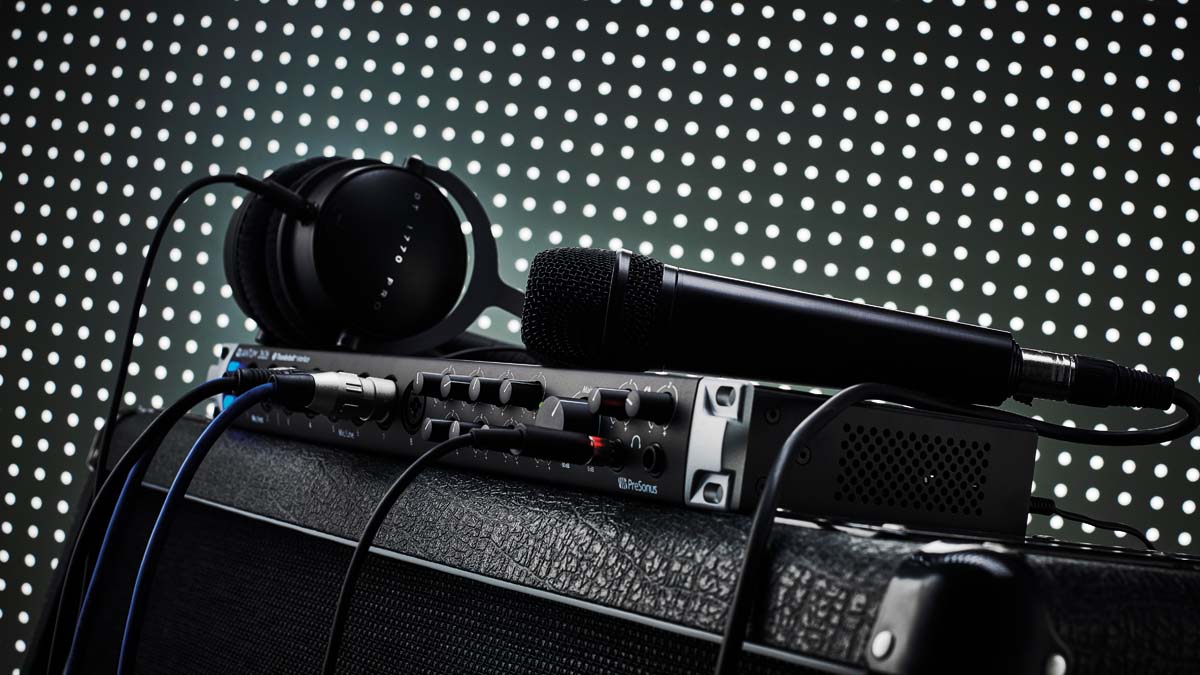MusicRadar Verdict
Lightning fast latency and quality Class A mic pres in a truly affordable package make the Quantum 2626 a highly desirable interface.
Pros
- +
Excellent quality Class A mic preamps.
- +
Extremely low latency and robust performance.
- +
The I/O can be expanded using the ADAT connections and additional converters.
- +
Up to 192kHz operation using onboard connectors.
Cons
- -
Thunderbolt 1 & 2 users need to buy a supported adapter and these are expensive.
- -
Physical input meters are limited to two-tone LEDs.
MusicRadar's got your back
What is it?
Looking to record and monitor multiple audio streams at once? USB may not be robust enough. The most reliable plugin system is Thunderbolt and Presonus’ new Quantum 2626 is their first interface to support the latest Thunderbolt 3 protocol.
Its USB-C style connector works with a Thunderbolt 1, 2 or 3-equipped computer (for Thunderbolt 1 or 2 you’ll need a converter cable). At just under £600, the 2626 is PreSonus’s cheapest Quantum interface. But it still sports an impressive feature set and operation at up to 24-bit 192kHz via its analogue inputs.
One of the big selling points is lightning fast and stable operation at very low latencies. The front panel includes eight XLR/TRS mic/line inputs (two with Hi-Z inputs) with corresponding gain controls and two-tone LED metering.
At just under £600, the 2626 is PreSonus’s cheapest Quantum interface. But it still sports an impressive feature set
There’s also a monitor output knob and a pair of headphone outputs with individual level controls. I’m sure the front panel input configuration won’t appeal to everyone, but you can’t argue with the simplicity of it.
Round the back you have eight balanced (TRS) line outputs with an additional main output that follows the main output knob. Note, the main output pair is DC-coupled, so you can use these to send CV signals to hardware synths.
Further connectors include MIDI in and out, Word Clock in and out and S/PDIF in and out. There’s also dual ADAT in and out which brings the I/O connectivity up to 26 streams. Plus individual insert points for inputs 1 and 2, a nice touch.
Performance and verdict
When PreSonus launched the Quantum series, they boldly ditched their onboard minimum latency monitoring and instead focussed on developing efficient reliable drivers that could deliver minimal latency.
Want all the hottest music and gear news, reviews, deals, features and more, direct to your inbox? Sign up here.
Quantum 2626 uses their Universal Control app but primarily for settings and input meter. For monitoring you’re fully reliant on your DAW. This rules out monitoring the inputs independently of your DAW, but is good for recording and overdubbing.

• Universal Audio Apollo Twin MkII
With Unison preamps and full access to the UAD catalogue, the Apollo Twin MkII does more than just amazing interfacing.
• Arturia AudioFuse
A nicely designed, highly configurable interface ready to have almost any sound source thrown at it.
In use the 2626 performed excellently. The Class A XMAX mic pres sounded wonderfully clear, with plenty of gain, and the operational simplicity of the unit meant no curve balls. But the winner here is the round-trip latency. Using Apple Logic X this was an impressive 3.4ms with 64-samples buffer size, and even at 128 samples I found the 6.3ms latency mostly workable.
Both these buffer sizes let me run quite CPU taxing sessions and monitor via plugins. But if you’re willing to keep things simple, the 16-sample buffer setting in Studio One 4 delivered a whole 1.27ms round-trip latency.
All told the Quantum 2626 delivers game changing latency in an incredibly affordable package for all Thunderbolt users.
MusicRadar verdict: Lightning fast latency and quality Class A mic pres in a truly affordable package make the Quantum 2626 a highly desirable interface.
The web says
"For those searching for a simple way to track eight (or more) microphones, while enjoying low-latency operation of software instruments, the Quantum 2626 should be near the top of your list of audio interfaces to consider, particularly when partnered with Studio One."
MusicTech
Hands-on demos
Sweetwater
PreSonus
zZounds
Specifications
- Simultaneous I/O up to 26 inputs / 26 outputs (at 44.1 or 48 kHz)
- 8 pristine XMAX preamps
- 2 Instrument Inputs
- 8 balanced line inputs
- Dual headphone outputs with independent level control
- Balanced stereo main outputs with independent level control
- 8 DC Coupled balanced line outputs
- 2 preamp direct outputs with returns to insert outboard gear
- Main Output Level Control
- Balanced Stereo Main Output (TRS)
- Eight Balanced Line Outputs (TRS (outs 1 & 2 share a DAC with the main output))
- Two Preamp Outputs (channels 1 & 2)
- Two Line Returns (channels 1 & 2)
- ADAT Optical/Dual SMUX inputs/outputs: 16x16 channels at 44.1 or 48 kHz; 8x8 channels at 88.2 or 96 kHz
- Stereo S/PDIF coaxial input and output
- Thunderbolt 3 high-speed bus
- 24-bit resolution and up to 192 kHz sampling rate
- BNC word clock input and output with low-jitter clocking
- MIDI I/O
- Road-rugged construction with all-metal chassis and metal knobs
- 1U rack-mountable
- 12 VDC external power supply (included)
- CONTACT: PreSonus
Jon is a London based platinum award winning mixer, producer, composer and club remixer with a diverse CV that spans dance, pop, rock and music for media. He’s also a long term contributor to MusicRadar's music technology tutorials and reviews. Whether working alone or collaborating he usually handles final mixdowns, so you’ll also find MusicRadar peppered with his handy mixing tips.

